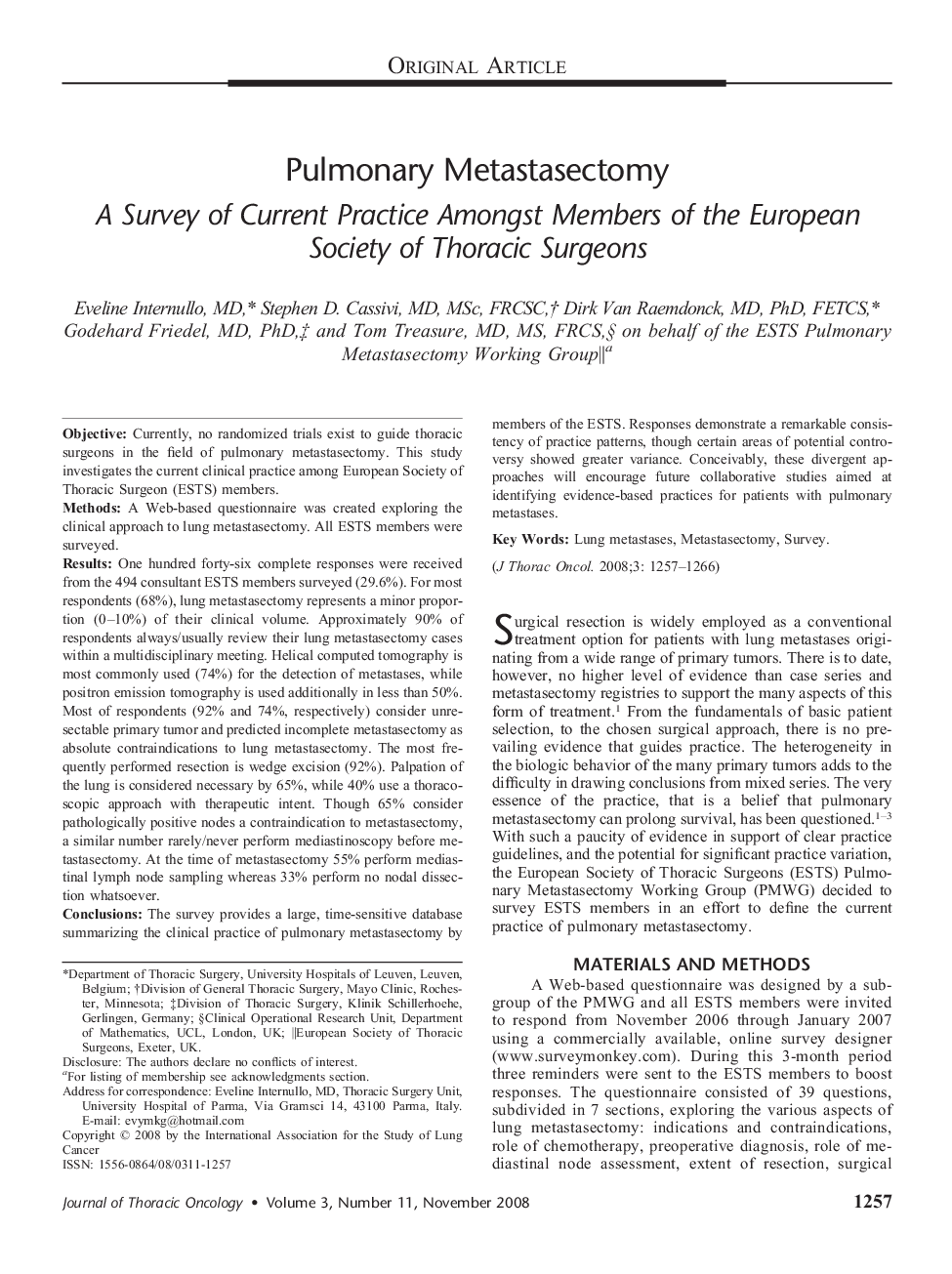| Article ID | Journal | Published Year | Pages | File Type |
|---|---|---|---|---|
| 3992249 | Journal of Thoracic Oncology | 2008 | 10 Pages |
ObjectiveCurrently, no randomized trials exist to guide thoracic surgeons in the field of pulmonary metastasectomy. This study investigates the current clinical practice among European Society of Thoracic Surgeon (ESTS) members.MethodsA Web-based questionnaire was created exploring the clinical approach to lung metastasectomy. All ESTS members were surveyed.ResultsOne hundred forty-six complete responses were received from the 494 consultant ESTS members surveyed (29.6%). For most respondents (68%), lung metastasectomy represents a minor proportion (0–10%) of their clinical volume. Approximately 90% of respondents always/usually review their lung metastasectomy cases within a multidisciplinary meeting. Helical computed tomography is most commonly used (74%) for the detection of metastases, while positron emission tomography is used additionally in less than 50%. Most of respondents (92% and 74%, respectively) consider unresectable primary tumor and predicted incomplete metastasectomy as absolute contraindications to lung metastasectomy. The most frequently performed resection is wedge excision (92%). Palpation of the lung is considered necessary by 65%, while 40% use a thoracoscopic approach with therapeutic intent. Though 65% consider pathologically positive nodes a contraindication to metastasectomy, a similar number rarely/never perform mediastinoscopy before metastasectomy. At the time of metastasectomy 55% perform mediastinal lymph node sampling whereas 33% perform no nodal dissection whatsoever.ConclusionsThe survey provides a large, time-sensitive database summarizing the clinical practice of pulmonary metastasectomy by members of the ESTS. Responses demonstrate a remarkable consistency of practice patterns, though certain areas of potential controversy showed greater variance. Conceivably, these divergent approaches will encourage future collaborative studies aimed at identifying evidence-based practices for patients with pulmonary metastases.
